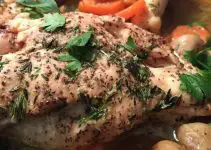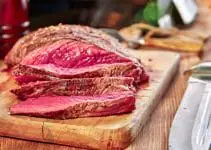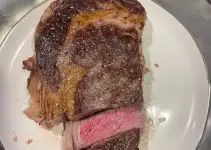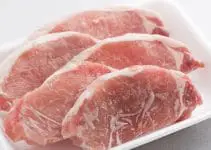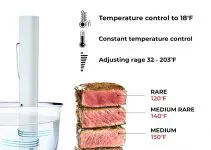Confit is a term with which you might not be as familiar as sous vide. The two cooking techniques generally have the same idea (low temperature, longer cook times), but each have a very different history. If you’ve ever thought about trying your hand at duck confit (Arguably the most famous confit dish), we will also talk about using a combination of the two cooking methods to make the best confit sous vide duck legs.
All about Confit Cooking
“Confit” comes from the French word “confire”, which means to preserve.1 Confit traditionally refers to any food that is first cured, then preserved, often meats, fruits, and vegetables. The food is cured with salt or sugar, and then preserved by slowly bringing it to a temperature in a liquid that is inhospitable to bacteria (like a high sugar-content liquid or pure liquid fat). After the food is cooked, its submerged in its cooking liquid, and can be stored at room temperature or refrigerated for long periods of time. The liquid (whether fat or sugar) prevents any bacterial growth, and because the food has already been “sterilized”, it’s a great way to preserve foods.
Also, foods cooked in the confit style are amazing; muscle and connective tissue are broken down and tenderized, producing tender, melty texture, which is ideal for tough meats like tongue or duck (which is commonly prepared confit).
Temperatures for confit cooking in an oven often hover around 250-275 degrees Fahrenheit, bringing the temperature of the fat or sugar cooking liquid to around 200 degrees. The temperature is high enough to break down connective tissues or cell walls, but does not promote water release from food, rendering it tender and juicy.
Preparing food in the confit style was traditionally intended as a storage method, prior to refrigeration and other preservation styles. Today, it’s less common for storage, and showcased more in the culinary world. True confit connoisseurs will argue that the aging process is truly what defines confit, though, as time is what develops and deepens the flavors of the aged foods.
The biggest misconception with confit cooking is that since the food is cooked in fat, it must be greasy; after all, the fat has to absorb into the food, right? Not true!
Fat is used to help regulate temperature and create an anaerobic environment, preventing bacteria growth. It is not able to penetrate into a piece of muscle meat, but could sneak through larger muscle groups. And, it will coat the entire piece of food with fat, but is that such a bad thing?
Confit and Sous Vide Cooking
The biggest challenge for a home cook who wants to confit is to actually procure enough fat to do so; for instance, one recipe for traditional duck confit calls for one quart of rendered duck fat, which costs about $40, and can be difficult to find. However, there is a way to cook duck legs so that they are essentially the same texture as confit…enter Sous vide cooking.
Confit cooking and sous vide cooking can be combined to make the most tender, succulent, perfectly cooked duck legs (or other high fat meat).2 Sous vide cooking will render the fat, allowing it to encase the food, providing the same effect as confit cooking. Additionally, the sous vide circulator helps to regulate the temperature of the cooking water, much more precisely than an oven, giving you more control over the texture of the meat.
Temperature and time could vary, based on texture preference. Additionally, the curing process that is characteristic of confit could be imitated by using a dry brine, or could be eliminated altogether (which would drastically cut down on prep time).
Sous vide and confit are both styles of cooking that involve longer cook time and lower temperature than other, traditional cooking methods. Confit cooking is generally meant for preserving, but has become a spotlight in the culinary world; however, confit foods served in restaurants are likely not aged for more than few days. Sous vide cooking is meant for precise temperature and texture control, and sous vide food, although it can be pasteurized at the right temperatures, should not be stored for long periods of time at room temperature (there is still a risk for botulism due to the lower cook temperatures).
Contributor:
This article was written by Stephanie Searor, MS RD LDN
References:

